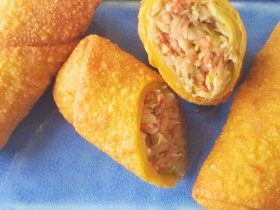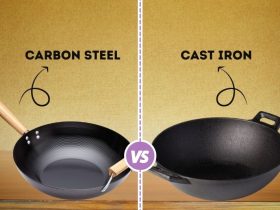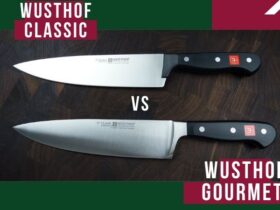Smart gadgets include food strainers that are simple, reliable, and so useful in every kitchen. Anyone who buys kitchen products for their own use or wants to start a food service company will need a strainer. It doesn’t matter if you have one or not. What strainer do you need?
Food strainers can be classified according to their ability to strain liquids from high-quality food ingredients or separate fine food components from larger foods. It all depends on how you use it. You can find many shapes and materials for food strainers. Strainers are available in a variety of materials, including stainless steel and nylon. You can match each material to specific food types or straining purposes. Let’s take a look at some of the different types of food strainers available and how they can be used.
Food Mill
 A food mill is a strainer that has a lot of muscle. The strainer usually has three parts. A bowl that can hold soft food, a bowl made of metal with turning blades and a bottom plate that houses the official strainer.
A food mill is a strainer that has a lot of muscle. The strainer usually has three parts. A bowl that can hold soft food, a bowl made of metal with turning blades and a bottom plate that houses the official strainer.
Food mills are used to process soft foods and remove any unwanted skin, fiber, pulp or seeds. You can smash the raspberries and then puree them in a food processor. The juice will pass through the sieve while the pulp and seeds remain on the top.
A food mill is a perfect strainer for any dish that requires to be mashed or pureed. A food mill can be used to quickly create delicious foods such as tomato sauce and mashed potatoes. It is important to invest in a high-quality food mill if you want it to last.
Things to keep in mind
- There are many loops and hooks that can be used to connect two bowls. The best hooks for connecting a bowl to a food mill work well. This allows the food to be separated quickly, whether it is mashed or pureed.
- Interchangeable blades. Your food mill does not have to be used to process only one type of active ingredient. A system with interchangeable blades is a smart idea.
- High capacity. Many people don’t need mashed potatoes for just one person, but many food mills only have limited capabilities. A larger, deeper food mill can perform more tasks.
- It is easy to assemble.
Colander
 A colander is a sieve with a bowl shape that drains liquids from pasta and other foods. Colanders made of aluminum had holes in their bowls. The handles could also be raised by using two wire handles. They can be lifted now that they are made of plastic.
A colander is a sieve with a bowl shape that drains liquids from pasta and other foods. Colanders made of aluminum had holes in their bowls. The handles could also be raised by using two wire handles. They can be lifted now that they are made of plastic.
Cooks will be safer using a colander for draining liquids from hot food like noodles. To reduce steam, cool water can be added to one side.
Avoid standing directly over the colander, as steam can cause skin burns. Once the liquid is removed from the pot you can drain it by shaking it a few times. The noodles and active ingredients can be moved to another dish or returned to the pot with sauce.
Things to keep in mind
- From large to medium-sized. If you are cooking alone, a larger colander is usually the best choice. You can use larger colanders in your kitchen to do large cooking tasks.
- 2 durable handles: Colanders are often used to pour hot liquids into them. You want one that is thick and sturdy so it can be easily picked up and held no matter how hot or heavy the liquids and foods you’re using.
- Raised base. Another important feature is a colander with a raised base. You can place the colander wherever you like, including in the sink. This does not affect its ability to drain water or juices.
Drum Sieve (Tamis)
 The drum Sieve is a common sight. The base of the sieve is usually made from a round, low-walled stainless steel. The mesh is then attached to the base. The mesh can be made from nylon or cheesecloth. This mesh allows fine flour particles and sugar to pass through the chamber quickly while larger products will be captured.
The drum Sieve is a common sight. The base of the sieve is usually made from a round, low-walled stainless steel. The mesh is then attached to the base. The mesh can be made from nylon or cheesecloth. This mesh allows fine flour particles and sugar to pass through the chamber quickly while larger products will be captured.
You can use sieves to make dry parts even finer. A drum sieve makes it easier to absorb sugar and flour in gravies or sauces. To make biscuit dough, a sieve is used to separate flour and flour. This helps produce lighter and fluffy biscuits. The common drum sieve measures twelve inches in size and provides a large working area for processing.
For making fresh juices, a drum sieve can also be used. Any fruit can be used, including tomatoes and apples. Next, slice the fruit into small pieces and place them on the sieve. Next, strain the juice using your tamis sieve’s mesh. The result is a fresh, pulp-free and delicious juice that can be enjoyed immediately after it has been made. The drum sieve can be used to make multiple juice mixtures by simply pushing several fruits through the sieve and then straining it through a mesh.
You can also use the drum sieve to prepare nuts for baking or cooking. The sieve will give the nuts a grainy texture that can be used in many batters and as an active ingredient in ice cream sauces. You can also use the stretched nuts in desserts, such as peanut soup. This will enhance the flavor and preserve the velvety texture.
Things to keep in mind
- Size. Drum Sieves come in sizes from 12 to 40 cm. Choose the size that best suits your favorite large pan or pot of cooking.
- Material and mesh gauge. There are many types and sizes of mesh available. Nylon mesh is the strongest (and also most expensive) type of mesh. Drum sieves can be used for fruit purees. They are capable of sorting out fine fruits and preventing rust. If you require something that can handle harder or more delicate foods, wire meshing is an excellent alternative.
Spider Strainer
 A spider strainer can be a very useful tool in the kitchen. They’re very useful. They are very easy to use and hassle-free.
A spider strainer can be a very useful tool in the kitchen. They’re very useful. They are very easy to use and hassle-free.
These strainers are used to drain hot liquids from pipes and warm water for many purposes, including cooking.
It can be difficult to find the best spider strainer because not all products are the same.
Things to keep in mind
- Size will determine the strainer’s size. If you intend to use the strainer for multiple purposes, a strainer that is at least medium in size is recommended.
- Materials: It is important to ensure that the product you purchase is strong and durable. Two of the most common strainers are stainless-steel and bamboo wood. You should inspect the materials used to ensure they last.
Chinois
 The Chinese, also known as a cone-shaped strainer, or sieve, is a kitchen tool that can be used to smoothen sauces and soups. It also has other tasks, such as sorting powdered Sugar onto baked goods.
The Chinese, also known as a cone-shaped strainer, or sieve, is a kitchen tool that can be used to smoothen sauces and soups. It also has other tasks, such as sorting powdered Sugar onto baked goods.
To make the cone-shaped strainer of a chinois, fine mesh is used. Although good quality chinois aren’t cheap, they can last a long time if the strainer is not pierced. It is a good idea to have two loops of wire protruding at the end of a chinois.
You can make a chinois handle from either plastic or stainless-steel. To hold the chinois onto your pot, you will need two hooks. To prevent a full-fledged Chinese chinois from slipping or tipping, double hooks are used.
Some varieties of chinois use cone-shaped wood sticks to strain food. You can use a rubber spatula or a wood spoon to strain the food, but avoid sharp objects that could cause damage to the mesh. In a pinch, a cheesecloth-lined routine coarse strainer or another alternative can be used. However, most cooks prefer the real thing.
Things to keep in mind
- Filter: The fit together filter is a chinois strainer. It has a fine mesh that differs from a large gap funnel. The mesh traps smaller food particles, which leads to smooth stock and soup. The majority of chinois strainers use a fine mesh basket. There are also options for coarse mesh or ultra-fine mesh.
- Size: Chinois strainers come in many sizes. Expect to find sizes between 3 and 12 inches. If you are a frequent cook or serve large quantities of food, a larger strainer may be more suitable. If you only make small batches of soups and similar dishes, a compact strainer may be more suitable. A large chinois strainer, while allowing you to do more work, will make it more difficult to save.
- Handle: This is what distinguishes colanders and chinois strainers. A chinois strainer’s handle allows you to keep the strainer steady while adding food. This is a great idea for cooks, especially when the strainer is full. A longer handle is easier to use than a shorter one. The best chinois strainers have been designed ergonomically for ease and convenience.
Potato Ricer
 The potato ricer is basically a large garlic press. It consists of a large hopper with small holes and a flat pushing device to push products through those holes. Two long handles are used to control the squashing action of a ricer. It is similar to a garlic press.
The potato ricer is basically a large garlic press. It consists of a large hopper with small holes and a flat pushing device to push products through those holes. Two long handles are used to control the squashing action of a ricer. It is similar to a garlic press.
If the potato press has the same functions as a ricer, it would be better named. Named after the rice-like potato pieces that form when the potato is pressed through small holes. This product has a texture unlike rice.
It is very consistent and smooth in texture. The best thing about potato mash potatoes is the potato ricers. To achieve this consistency, you will need to pulse the potatoes.
When the starch is crushed by a powerful smashing, it can leak out of potato cells. This is why mashed potatoes can become “gluey”. You can get super-smooth mashing with a potato ricer without the need for sticky starch.
Potato ricers can be used to smash potatoes into gnocchi or potatoes. You can also use them to make homemade child food, juices and force water from prepared greens.
Things to keep in mind
- Ricing Holes. How easy it is to “rice potatoes” will depend on how many holes there are in the bottom of the hopper. This will allow food to be pulled through the holes quickly. If there are many small holes, the hopper can make potato mash faster and more efficiently. The size of the holes will determine the texture of the mash. A mash that has fewer holes will have a smoother texture. If the holes are too large, you can have a bumpy mash.
- Handles: This is a key factor in the way that the potato ricers are used, especially for people with arthritis and weak wrists. Handles should be easy to grasp and ergonomically designed. You have two options: a rubberized finish or cushioned material. You will feel more secure when you squeeze the handles with longer handles and a contoured design.
- Hopper Design: The container that holds the potatoes is called a hopper. A smaller hopper may hold one cup of mash. No matter if you are making mash for one person or a large group, the hopper should be big enough to hold an entire potato.
Final Word
As you can see, all strainers work in the same manner. There are many strainers available for professional chefs and home cooks. Each one has a different function. You don’t have to buy each type of strainer individually. Instead, you can start with the most popular colander, then move on to the multi-purpose spider strainer. Next, choose the strainers you prefer for your kitchen. Specialist restaurants and kitchen shops will often present each strainer to customers so they can see how it looks. Clients can also try each strainer and find out how it performs in their particular job. They state that there is a tool for every job in the kitchen. Enjoy your cooking!






